

Impromptu Camping
Because of the cold and exhaustion I felt it wise to set up camp for the night. I didn't spend time looking for an area to "camp," rather the impromptu camping site presented itself as an area where trees had fallen in a rectangular pattern, just as if you were stacking them up to build a log cabin. I had a 4-foot by 6-foot enclosure about two or three feet high and there was a large, mostly flat rock occupying the interior space. It was perfect to assure that I wouldn't start a forest fire.
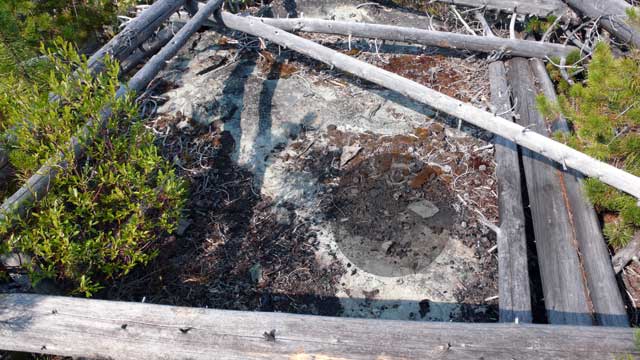
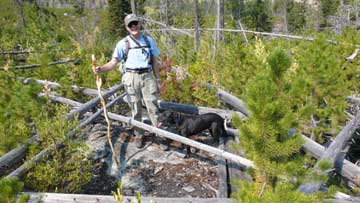 |
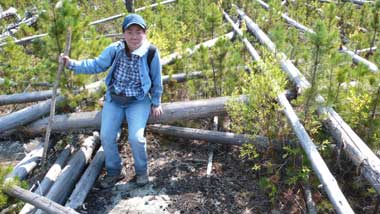 |
| Bill Gallea and Magic - showing the size of the "cabin" | Siew Hwa in the "cabin" |
It was cold so I had to start a fire. My experience told me a large fire, while producing a great deal of heat, would not work well because it keeps you too far away. I built a small fire about one-foot long and six-inches wide. I was unable to lay on my back or left side because of pain, but had some success in curling up around the fire on my right side. This made my front side comfortable, but my back side was freezing. The fire would go out about every hour and needed additional wood (of which there was plenty) and stoking to build it up again. This provided naps throughout the night, but no restful sleep.
I had a cigarette lighter in my pocket and an abundance of wood. J.C., on the other hand, didn't have any matches or a lighter to start a fire. During the night he moved to the area of the burned aircraft and huddled on the heated rocks for warmth.
At 6:00 a.m. I tried to walk out. Even with the motivation of obtaining help for J.C., I just couldn't do it at that time. I ate a bunch of ants for protein and was off again ... just kidding, I didn't eat anything; although there were elk, porcupine, ruffed grouse, a yellow-orange colored snake with a stubby tail (found out later it was called a false boa), tree squirrels, porcupines, and plenty of big spiders around.
Shortly after 6:00 a.m. I spotted Jerry Cain of Lincoln, Mont. in his red Husky flying over the ridge to the northwest of my position. I had flown with Jerry the day before and recognized his airplane. He was flying toward the west. I put green limbs on the fire and created smoke, but by then he was too far to the west to see it.
It wasn't until 8:40 a.m., after mild exercises and stretching to work out the stiffness, that I developed the wherewithal to get moving again. It was slow going with all the downed timber. There was a big fire in the area in the 1980s, then the wind wrecked havoc on the dead trees. If the timber had been blown down so that it was all in one direction it wouldn't have been too bad of a hike. The area was more like the game of "pickup sticks" with timber strewn in all directions. Considering the inhospitable terrain and the injury incapacitation I only made about one mile in five and one-half hours of hiking on Monday, June 4, 2007.
The Monday morning hike provided company. A small yellow butterfly landed on my hand while walking out from the "cabin" camping site. I had a walking stick in my right hand and occasionally it would slip on the ground and provide a jolt. The butterfly would "lift off" then settle back down on my hand or wrist. He stayed with me for more than 30 minutes. It was nice to have the diversion of some company to take my mind of the present situation.
Search planes were flying back and forth in the canyon and up the South Fork of Beaver Creek. I was praying that they would find J.C.
When I spotted a Robertson R-44 buzzing around I figured that "Eagle-Eye Mike," as he has become affectionately known, was on the job. Mike Wallace and Matt Call in Butte have been instrumental in making the last three finds during extended Montana air searches. Around 10:00 a.m. I saw the "big iron" helicopter making a b-line to and from the crash site area, so I figured that Mike and Matt had spotted J.C. and they were evacuating him. This was further confirmed when the helicopters started concentrating their search along Beaver Creek.
I built a couple of smoke fires, but the helicopters disappeared each time the smoke started billowing up. At one point I moved southeast to the side of the mountain figuring the rock slide area might be easier to traverse. I burned all the trees on the side of this mountain ... well, okay, there were only two trees. A old dry dead tree was angled across the base of a pine. I started the dead tree on fire and it quickly spread to the pine pouring out plumes of smoke. No one flew by during the 30 minutes or so that it burned.
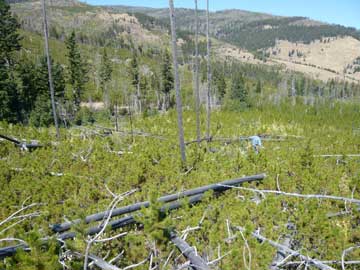 When
a powerful thirst developed I moved to the north-northeast trying to get to
Beaver Creek. It was a jungle of downed timber. I got to the point where I
found it was easier to walk along the logs, zigzagging along instead of
lifting my legs over the downfall.
When
a powerful thirst developed I moved to the north-northeast trying to get to
Beaver Creek. It was a jungle of downed timber. I got to the point where I
found it was easier to walk along the logs, zigzagging along instead of
lifting my legs over the downfall.
I was unable to bend over or even kneel so I could cup my hands and get a
drink. By laying beside the creek I could take off my shoe, dip it in the
water and get a drink.
I was at Beaver Creek getting a drink around 2:00 p.m. when a National Guard
helicopter passed over me a couple of times. The first time I was laying
down along side of the creek getting a drink. The next time I was in thick
timber working my way back to a somewhat open area.
I carried a small Sony digital camera in a cell phone case on my right side.
When I reached for it to use the flash as a signal, the camera was gone.
Dirty darn and shucky poo. I had the crash and fire photos on that camera.
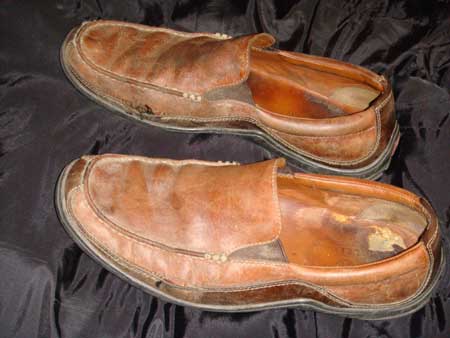 The
Cole Haan shoes (division of Nike) were wonderful for the hike. A
smooth leather soled shoe would have made it impossible to walk along the
logs, but this sole of soft rubber is patterned with small bumps much
like a hiking shoe. I didn't slip once because of the shoes.
The
Cole Haan shoes (division of Nike) were wonderful for the hike. A
smooth leather soled shoe would have made it impossible to walk along the
logs, but this sole of soft rubber is patterned with small bumps much
like a hiking shoe. I didn't slip once because of the shoes.
The terrain was fairly rugged and these were not hiking shoes. Note the
stitching is coming out along the creases.
I still use the shoes for yard work, painting
and other "dirty" chores.
Rescue
At 2:10 p.m. Monday, June 4, 2007, the
National Guard's military version of the Jet
Ranger passed over me again while I was
in a somewhat open area. Since I had
expended energy waving and yelling the
other two times they flew over me, this
time, in frustration, I just raised my arm
and pushed my hand toward them,
turn around and continued walking
downstream. They flew over me and
slammed on their "air brakes," turned
around and Tim Graff waved.
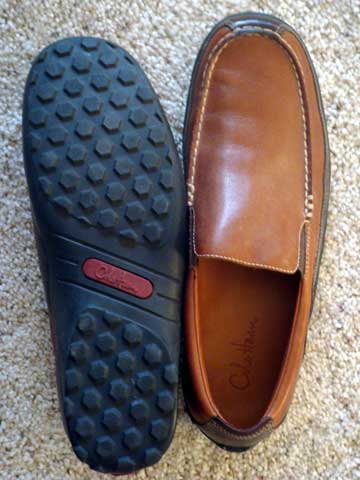
Graff and Randy Yeager landed on the northwest side of Beaver Creek. During the spring at this lower elevation it was not a benign creek but rather a raging river. Graff crossed the creek on a fallen log and came to check me out. When he determined, because of my injuries, there would be no way for me to cross the creek, he headed back to the helicopter and radioed for a "hoist" helicopter from Malmstrom Air Force Base.
On his return Graff stopped and filled a large baggie with water and waited with me. At 3:25 p.m. the Air Force helicopter arrived. Even though they knew where we were they had to fly around for about 10 minutes before spotting us.
They dropped a winch with an "angel" riding it down (a young lady) and I was jerked from the jaws of death and flown to St. Peter's Hospital in Helena.
The newspaper said I was picked up about one mile from the crash site; it was 2.8 miles as the crow flies. I had walked 4.3 miles during the 12-hour hike on Sunday and another .95 miles in 5.5 hours on Monday, (verified by GPS on two return trips searching for the camera) averaging about 0.3 miles per hour, which is pretty pathetic unless you consider the injuries.
Lessons Learned
Wear a flight vest with some survival equipment. I found the "fishing" vests are too short and place the weight of the contents on the neck when in a sitting position. If you opt for a fishing vest make sure the collar is cut so the weight is distributed along the shoulders. I tried a photography vest. It is longer and the weight of the contents rests on the shoulders rather than the neck; when seated the weight rests on the thighs. It is very comfortable.
Probably the most important item to carry is a PLB (Personal Locator Beacon) with built-in GPS. I carry both the ACR AeroFix 406 with GPS Interface and the SPOT Satellite Personal Tracker. The SPOT has a tracking feature that plots your position every 10 minutes (an additional subscription), an OK message capability and the 911 feature to obtain help.
It is a good
idea to have a survival kit. I've carried one that I made for more than
40 years, but not with the intention of using it after crashing. I
thought it wise to have along should I have a flat tire, encounter a
mechanical problem, or become weathered in at a backcountry airstrip.
Rob Hunter, survival expert, made up a kit that was much better than the
one I prepared. It has what you need and is good quality --
www.PreparedPilot.com -- but
after this incident I've decided the kit is a camping kit rather than a
survival kit. Whatever you carry ON YOUR BODY and IN YOUR POCKETS is your survival kit.
None of the survival gear does much good sitting in the baggage
compartment or draped over the pilot's seat back, so wear the vest. When
you get out of a burning airplane the only survival gear you will have
is what you are wearing. It's a good idea to understand the psychology
involved in the aftermath of an accident. I was wearing a new Bose
headset when I exited the burning airplane. I threw it on the ground
when it impeded my egress. Because of the injuries and the fire I did
not care about the $1,000 headset and I wasn't going back to try to open
the baggage door for J.C.'s equipment. Getting away was the important
thing.
File a flight plan. It is sometimes frustrating trying to get through to Lockheed Martin but they are getting better all the time. If you give up on the telephone, file a detailed itinerary with a responsible person. If you modify your route, tell someone, even Lockheed Martin, explaining you have a flight plan on file with a friend.
Never loosen the shoulder harness to be able to see around the pilot in tandem seating aircraft. Use seat cushions instead.
Forget the "Any landing you can walk away from is a good landing."
If you are a flight instructor you might consider arm wrestling with your student before heading out to fly in the mountains. If the student winds, don't fly below 2,000-feet AGL.
As an aside, there is a movement underway to rename the crash area "Brokeback Mountain" since both J.C. and myself suffered broken backs. There is however some resistance from the Helena National Forest ...
J.C.'s Injuries:
Broken sternum, various bruises, compression fracture of two vertebrae, lacerations, broken tibia right leg, right eye injury.
Sparky's Injuries:
Broken big toe right foot (not bad except for hiking), L1 compression fracture with retropulsed fragments and canal stenosis, L2 burst fracture, two broken ribs lower left, two broken ribs upper right causing partially collapsed lung, hemotomas and contusion of frontal scalp, two teeth knocked out, left eye injury, blood and/or edema in the ethmois and maxilary sinuses bilaterally but without obvious fracture deformity.
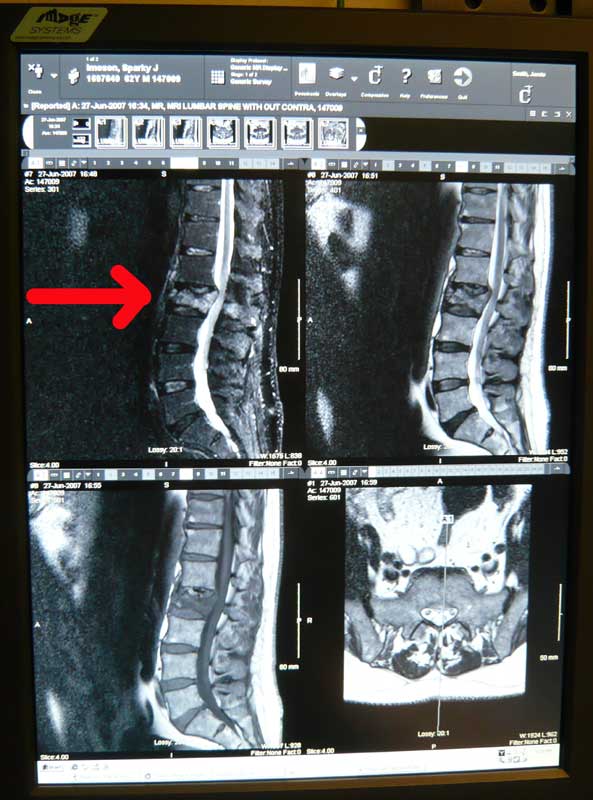
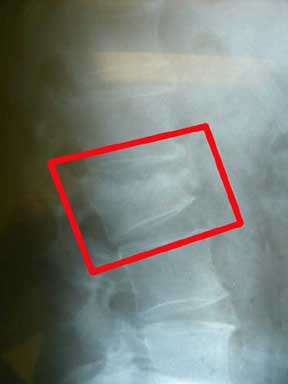
|
|
|
|
Home |
Order Form
|
Information |
the Author
| Mountain Flying |
Flying Articles |
Airstrips |
Contact Us |
Updates
|
|
Galen Hanselman |
McCall
Mountain/Canyon Flying |
Peterson's Performance
Plus |
Services |
Return Policy |
Site Map |
Quick Find
|
Page prepared by
Sparky Imeson – Copyright © 1995-2007 Mountain Flying LLC
Mountain Flying, LLC - PO Box 573, Jackson, WY 83001-0573 USA - (307)
733-3516,
Last modified:
02/11/2009